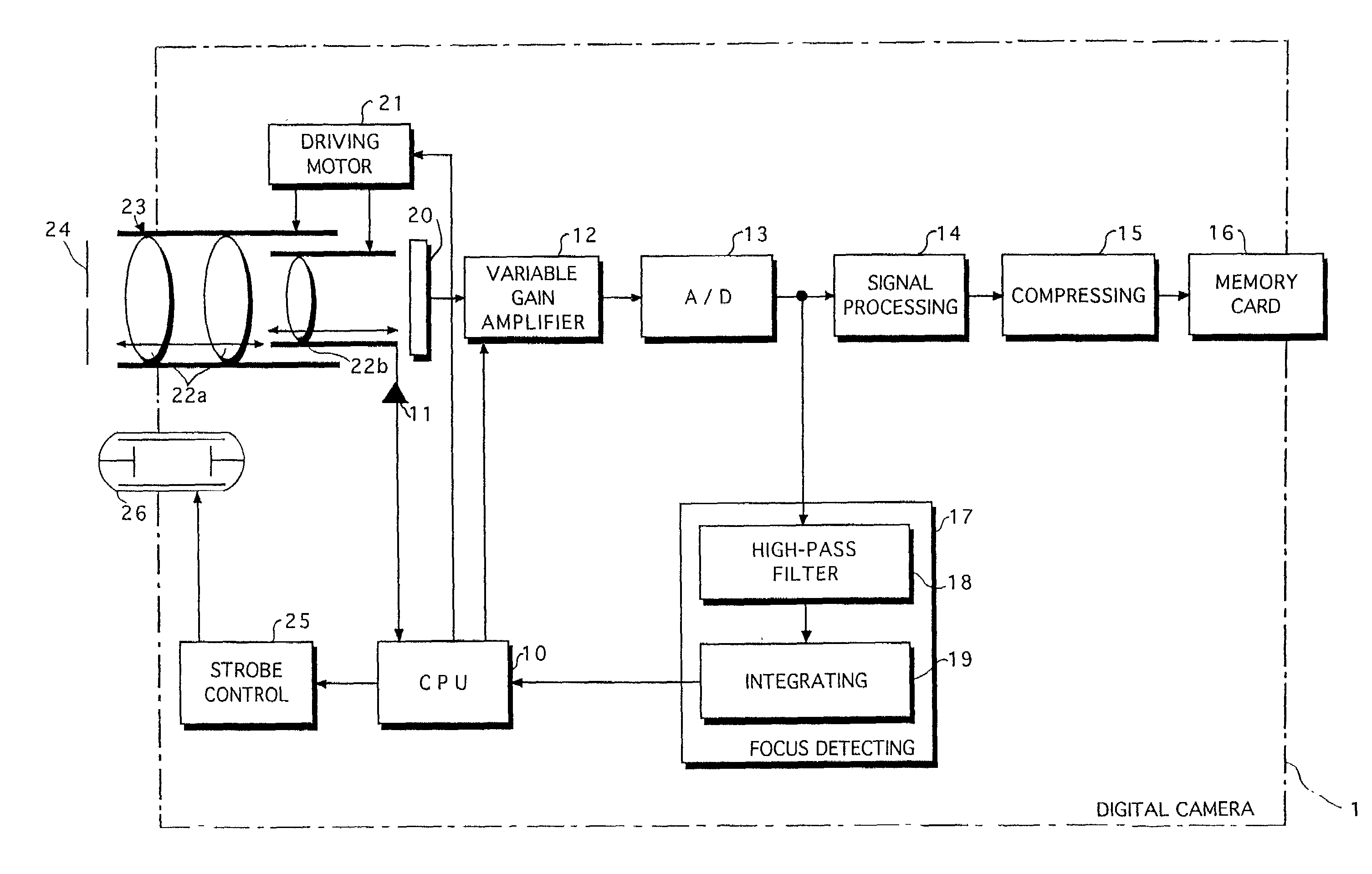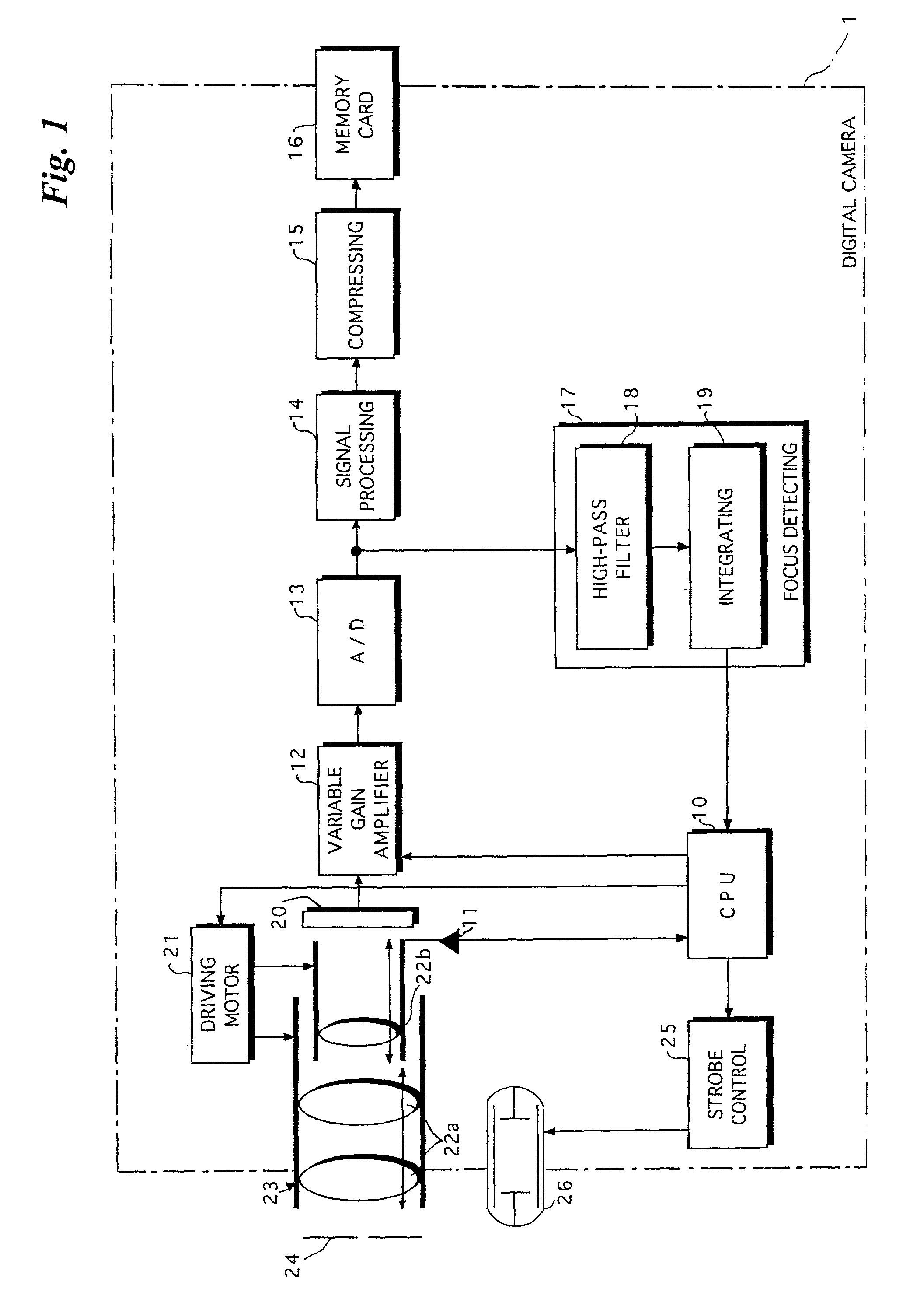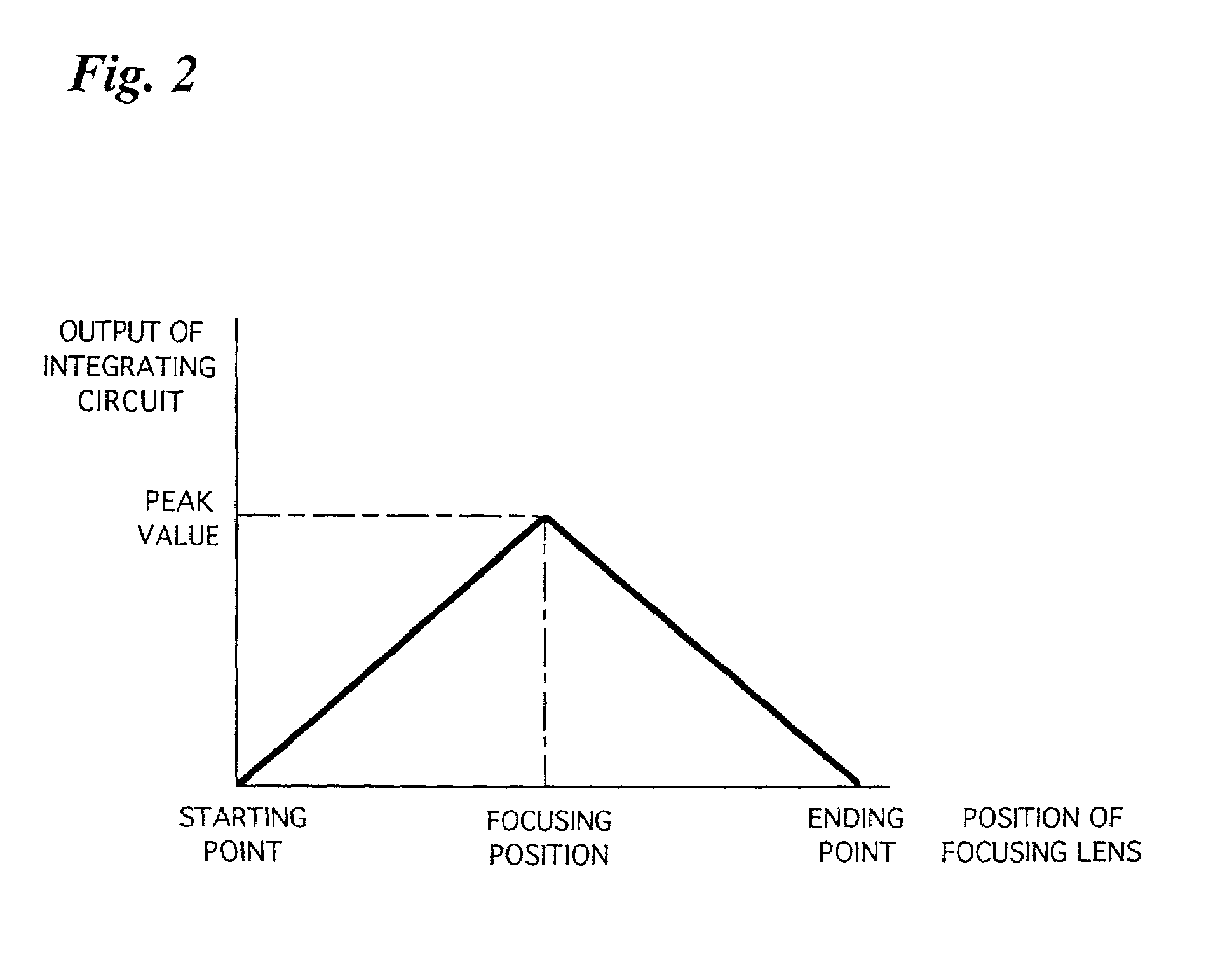Digital camera and method of controlling the same
- Summary
- Abstract
- Description
- Claims
- Application Information
AI Technical Summary
Benefits of technology
Problems solved by technology
Method used
Image
Examples
Embodiment Construction
[0024]FIG. 1 is a block diagram showing the electrical configuration of a digital camera 1. FIG. 2 is a graph showing an example of the change of an output signal from an integrating circuit 19 contained in the digital camera 1.
[0025]The digital camera 1 comprises a CPU 10. The digital camera 1 is supervised and controlled by the CPU 10.
[0026]The digital camera 1 comprises an optical unit 23. The optical unit 23 has a group of lenses comprising a plurality of lenses. The group of lenses includes a zoom lens(es) 22a for zooming and a focusing lens 22b for focusing. The zoom lens 22a and the focusing lens 22b are moved by a driving motor(s) 21 controlled by a control instruction issued from the CPU 10.
[0027]Furthermore, the digital camera 1 includes an aperture (iris or diaphragm) 24 for adjusting the amount of light. The aperture 24 is controlled by the driving motor(s) 21.
[0028]The digital camera 1 further includes a starting point sensor 11. The focusing lens 22b is moved between a...
PUM
 Login to View More
Login to View More Abstract
Description
Claims
Application Information
 Login to View More
Login to View More - R&D
- Intellectual Property
- Life Sciences
- Materials
- Tech Scout
- Unparalleled Data Quality
- Higher Quality Content
- 60% Fewer Hallucinations
Browse by: Latest US Patents, China's latest patents, Technical Efficacy Thesaurus, Application Domain, Technology Topic, Popular Technical Reports.
© 2025 PatSnap. All rights reserved.Legal|Privacy policy|Modern Slavery Act Transparency Statement|Sitemap|About US| Contact US: help@patsnap.com



